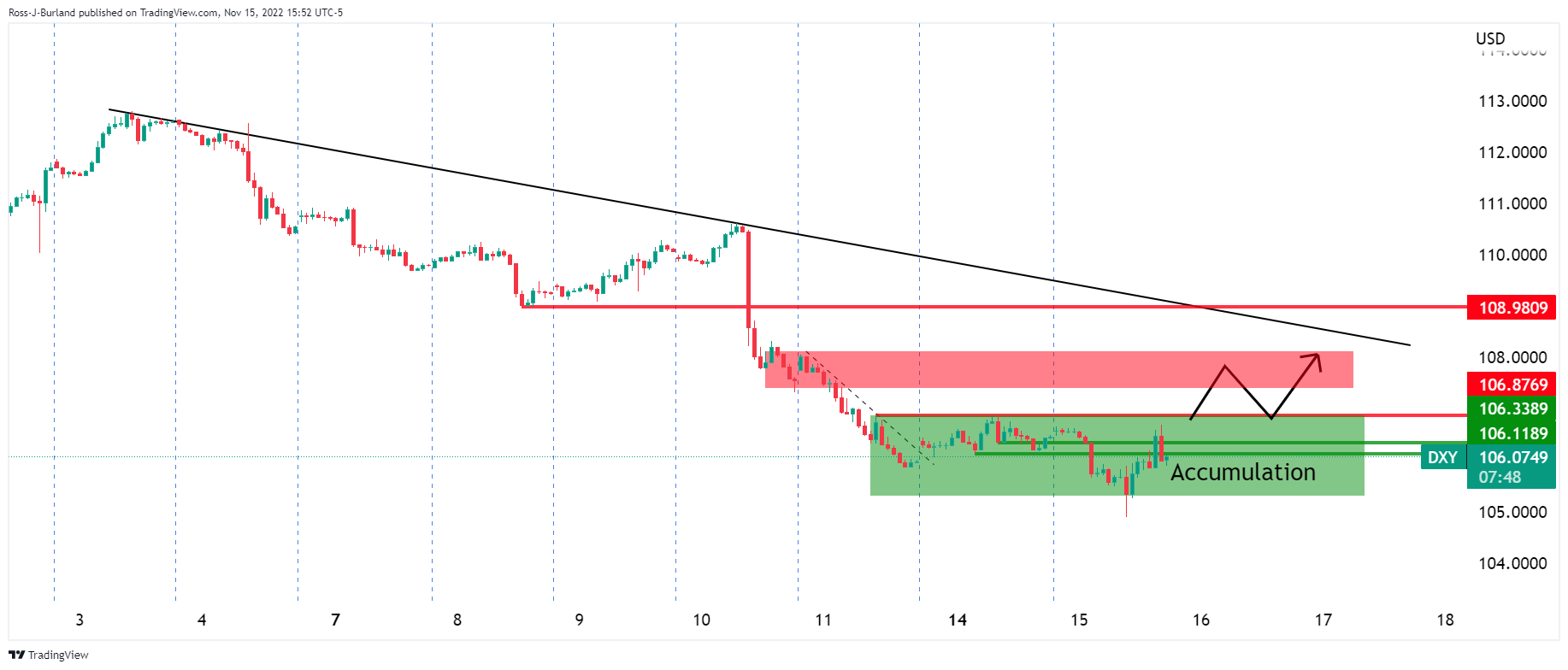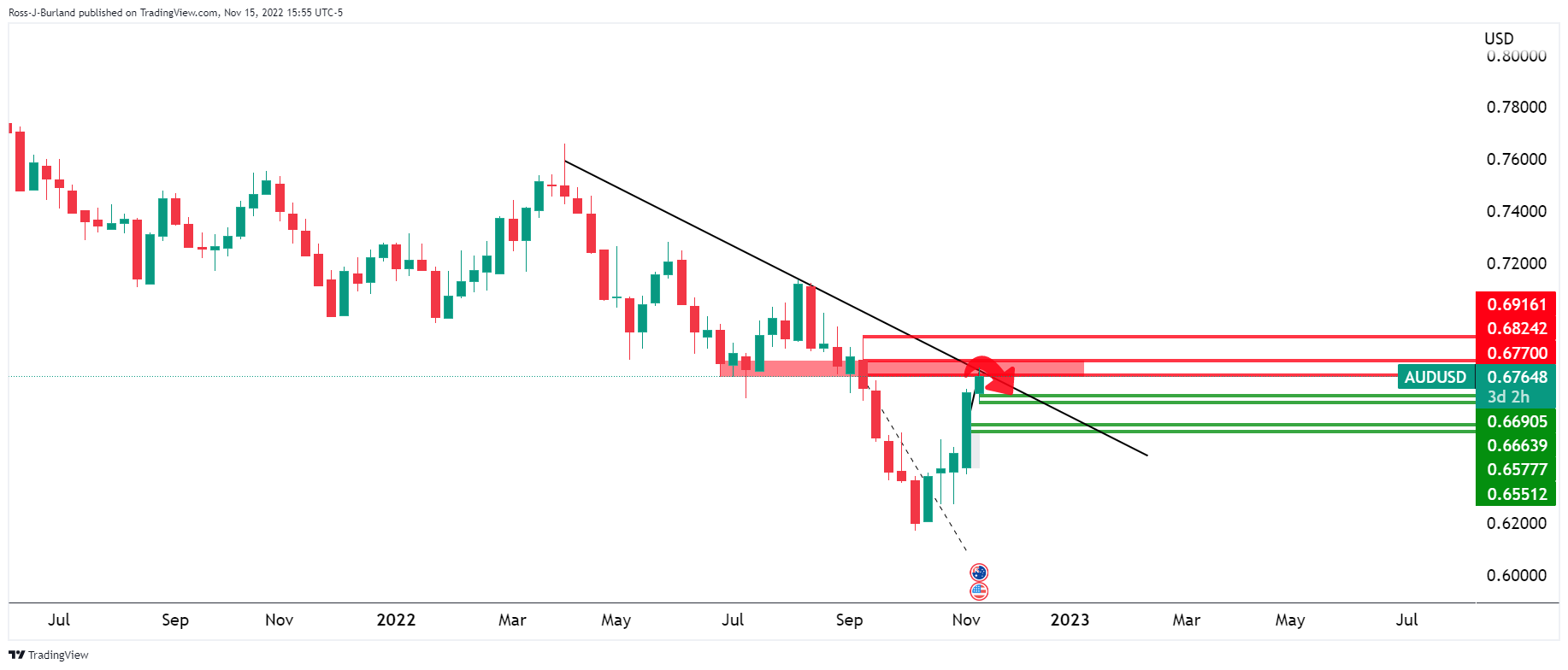- AUDUSD bulls stay the course but find key resistance.
- Geopolitical risks have reared their ugly heads around the noise from Poland and Russia.
AUDUSD is up around 1% and has rallied from a low of 0.6685 to test a key daily resistance line near 0.6800. However, there has been a failure because it has supported the risk complex, specifically the US dollar, in today’s escalating geopolitical tensions in the Russia-Ukraine conflict.
In midday trading on Wall Street, the news that at least two people have been killed after Russian missiles fell on the NATO state of Poland, on the border with Ukraine, according to the Express. Poland and Hungary have called national security committee meetings, and the US Pentagon is trying to collaborate on the news. A NATO official said “we are studying these reports related to the explosion in Poland and coordinating closely with our ally Poland.”” Volodymyr Zelenskyy, the Ukrainian president, said the Russian missile strikes on NATO territory are a significant escalation, and that action is necessary. The Latvian defense minister said that NATO “could provide air defenses to Poland and part of the territory of Ukraine.”
RBA vs geopolitical risks
The implications of this are very bearish for financial markets and high beta currencies like the Aussie. Since the AUD is running into a daily trend line, see below, the path of least resistance is down. For now, however, it is hovering around its strongest levels in nearly two months as traders digest the latest minutes from the central banks’ policy meeting, which showed policymakers are open to pausing the tightening cycle or to raise interest rates further depending on the data that arrives.
Reserve Bank of Australia Deputy Governor Michelle Bullock also recently stated that the cash rate is likely to continue to rise. However, she added that an eventual pause in rate hikes is getting closer. Earlier this month, the RBA delivered a smaller-than-expected rate hike of 25 basis points, and has already raised the cash rate by a total of 275 basis points since May.
Meanwhile, investors remained cautious as Federal Reserve officials signaled that US rates could end up higher than anticipated. Hardline Fed spokesmen are supporting the dollar, which is now being fueled by geopolitical risks as well. However, Tuesday’s Producer Price Index mirrored last week’s Consumer Price Index. The DXY fell to its lowest since mid-August at around 105.35 and is on track to test the August 10 low at around 104.636. However, the bulls have moved in and are stepping on the accelerator again:

US yields reacted accordingly with the PPI coming in at 8.0% vs. 8.3% expected and 8.4% revised (was 8.5%) in September. The PPI stood at 6.7% year-on-year, compared to 7.2% expected and actual in September. “The PPI data will not help dispel the notion that the Fed is nearing a pivot,” analysts at Brown Brothers Harriman said.
Australian employment in the spotlight
On the domestic front, Australian jobs data will be in the spotlight. ”Wage growth is likely to pick up again, driven by the adjustment from the Fair Work Commission decision, while private sector wage adjustment typically occurs in the third quarter,” TD analysts said. stock. ”On the other hand, we expect job losses in October, contrary to expectations. A weak jobs number could boost expectations that the RBA is nearing a pause, although we believe it is still premature.”
AUDUSD Technical Analysis


The daily and weekly charts offer a bearish outlook as the price remains in front of the downtrend lines and below the weekly horizontal structure.
Source: Fx Street
I am Joshua Winder, a senior-level journalist and editor at World Stock Market. I specialize in covering news related to the stock market and economic trends. With more than 8 years of experience in this field, I have become an expert in financial reporting.







